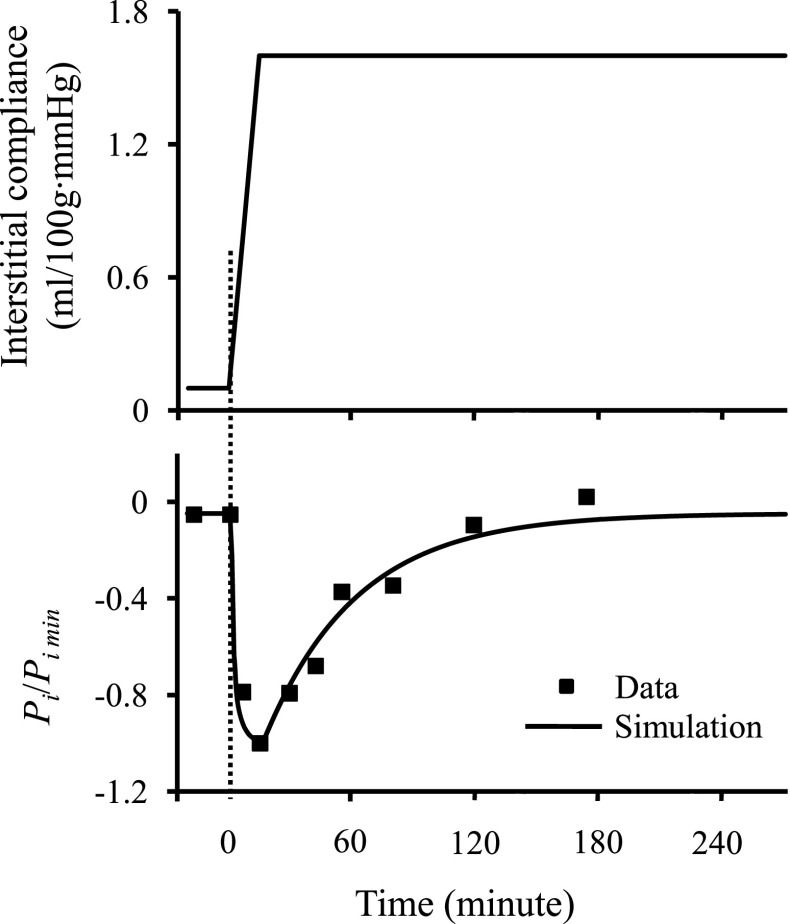Fig. 3.
Data originally reported in Lund et al. (43) was derived from a 40% burn injury in skin, which caused a rapid increase in interstitial compliance. The resulting interstitial fluid pressure (Pi) dropped rapidly, which is normalized here by the peak negative value (Pimin = −31 mmHg). The curve represents simulation of the effect of rapidly increasing interstitial compliance on interstitial fluid pressure found by numerically solving Eqs. 2–7. The set of model parameters was chosen such that Eq. 8 reproduced the reported steady-state interstitial fluid pressure before the burn injury (approximately −1.6 mmHg). The value of interstitial compliance was chosen to reproduce the reported value of Pimin. The resulting model parameters were Pc = 16 mmHg, Cc = 58 mg/ml, σ = 0.62, Pp = 20 mmHg, Pout = 2 mmHg, Kf = 0.02 ml/100g·mmHg·min, and RL = 66 mmHg·min/ml·100 g. Increase in interstitial compliance causes interstitial fluid pressure to rapidly drop, and then recover to baseline values following an exponential time course (time constant, ≈45 min).

